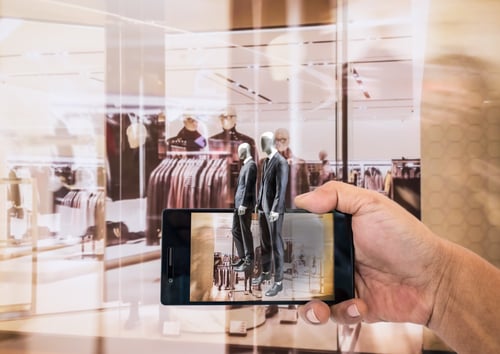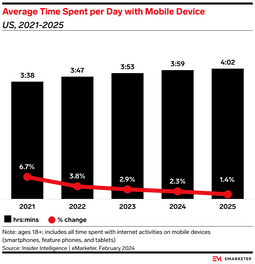
The Simpler Times of Brand Management
Back in the early days of brand management, there were fewer brands, competitors, and product or service offerings in most categories and industries. Not surprisingly, in a world with fewer alternatives, it was far easier for any single brand to position itself as distinctive from all others. Marketers and brand strategists simply conducted market research and determined how they wanted to be perceived in the minds of consumers. They then created 30-second ads and reached audiences on one of only three broadcast networks.
The role of consumers was simplistic as well—they bought and used the products that the manufacturers made. While they did “vote with their checkbooks,” they had very little influence. Clearly, it was a simpler time —manufacturers produced, retailers sold, and consumers purchased. In this undeniably oversimplified value chain, manufacturers held all the cards.
Elimination of Barriers to Market Entry
The internet is undoubtedly one of the most influential innovations in recent history. Since its inception, marketing is no longer limited to billboards, television and print advertising, direct mail, or catalogs to reach global audiences. Today, virtually any brand, global or local, can reach customers and prospects around the world with minimal effort, essentially eliminating the barriers to market entry. Brands are launched and thrive almost instantaneously. Consider that three of the most influential and valuable brands in the world today—Amazon, Google, and Facebook—didn’t even exist 30 years ago.
Rewriting the Rules of Brand Strategy (& Marketing in General)
Today’s consumers are digital explorers. Social media, digital streaming media, mobile networks, and smart devices have ushered in a new era of real-time, highly personalized, multichannel communications. Online ratings, peer reviews, videos, and in-depth product details are invaluable as customers and prospects move along the path to purchase.
The Proliferation of Mobile
In 2015, mobile searches surpassed desktop searches, significantly shifting the way businesses engage consumers. The proliferation of mobile devices as the go-to tool for search and buying has uncovered innumerable opportunities for brands to interact with consumers that never existed before. In our new reality, apps like Snapchat, WeChat, and WhatsApp confirm that everything happens in real-time. From awareness to purchase, marketers need to keep up with the dizzying pace of consumers. The points of engagement and transaction are converging; brands that can offer immediacy, personalization, authenticity, and accessibility will ultimately win.
Smartphone Usage
Time spent on smartphones by US adults jumped significantly, increasing by 17.7% to reach 3 hours and 2 minutes in 2020, compared to 2 hours and 34 minutes in 2019. This surge was driven by factors such as subscription video-on-demand services, TikTok, podcasts, and the impact of the pandemic, as highlighted in our US Time Spent with Connected Devices 2022 report.
3 hours and 2 minutes in 2020, compared to 2 hours and 34 minutes in 2019. This surge was driven by factors such as subscription video-on-demand services, TikTok, podcasts, and the impact of the pandemic, as highlighted in our US Time Spent with Connected Devices 2022 report.
Looking ahead, this trend of increased smartphone usage is expected to continue, albeit at a slower pace. By 2024, smartphone usage is projected to grow by 2.1%, reaching 3 hours and 31 minutes, up from 3 hours and 26 minutes in 2023.
The Ongoing Debates: Digital vs. Traditional Marketing
Technology has changed everything, and two ongoing debates persist:
- Is digital marketing replacing traditional marketing or merely supplementing its reach?
- Is there a balance to strike between the two?
Marketers are familiar with traditional marketing methods; they’re easy to understand, and we’ve used them for decades. Traditional marketing is based on an in-your-face “interruption” strategy—brands bring their message to consumers via television commercials, printed billboards, and print advertisements.
Digital marketing, on the other hand, is relatively new and based on an inbound strategy. Companies publish their product and service information via corporate websites, blog posts and articles, pay-per-click ads, and posts on social media platforms for potential customers to find, all of which offer an opportunity for more targeted advertising.
The Fluid Brand Experience
The application of digital technology to the world of marketing activation introduced an entirely new set of channels, touchpoints, and experiences for brands. Additionally, customers do not delineate between physical and digital touchpoints; to customers, the brand experience is fluid. The medium through which the brand delivers the experience is irrelevant, as our managing partner, Mitch Duckler, exemplifies in his book, "The Indispensable Brand."
The Future of Brand Strategy in a Technological World
Technology has undeniably transformed the brand landscape. The barriers to market entry have crumbled, creating a highly competitive environment where even small brands can make a global impact. With the proliferation of digital platforms and mobile devices, the rules of brand strategy have been rewritten.
Brands now need to engage consumers in real-time, offering personalized and authentic experiences that resonate on a deeper level. The traditional marketing playbook is no longer sufficient; brands must adapt to the fluid, omnichannel reality of today's market.
As we look to the future, the balance between digital and traditional marketing will continue to evolve. Brands that can seamlessly integrate both strategies while leveraging the latest technologies to enhance customer engagement will thrive.
The challenge lies in staying ahead of the curve and being bold enough to embrace the opportunities that technology presents. By doing so, brands can create lasting connections with their audiences and drive meaningful, transformative growth. So, what's next for your brand? It's time to harness the power of technology and shape the future of your brand strategy.
Recent Posts
Posts by Topics
- Brand Strategy (57)
- Brand Strategy Consulting (28)
- Brand Differentiation (27)
- Customer Experience (24)
- Brand Positioning (22)
- Marketing Strategy (9)
- Brand Extension Strategy (8)
- Customer Behavior (8)
- Brand Architecture Strategy (7)
- Brand Extension (7)
- Brand Growth (7)
- Brand Portfolio & Architecture (7)
- Brand Purpose (7)
- Brand Value Proposition (7)
- Brand Engagement (6)
- Brand Portfolio Strategy (6)
- Brand Storytelling (6)
- Rebranding Strategy (6)
- Brand Awareness (5)
- Brand Image (5)
- Branding (5)
- Rebranding (5)
- Technology (5)
- B2B Brand Strategy (4)
- Brand Experience (4)
- Value Proposition (4)
- Brand Extendibility (3)
- Brand Metrics (3)
- Brand Repositioning (3)
- Corporate Branding (3)
- Differentiation Strategy (3)
- Measurement & Metrics (3)
- Brand Engagement Strategy (2)
- Brand Portfolio (2)
- Brand Promise (2)
- Brand Voice (2)
- Digital Marketing (2)
- Digital and Brand Experience (2)
- Employee Brand Engagement (2)
- Brand Architecture (1)
- Brand Development (1)
- Brand Equity (1)
- Brand Identity (1)
- Brand Measurement (1)
- Brand Name (1)
- Brand Strategy Consultants (1)
- Brand Strategy Firms (1)
- Digital Strategy (1)
- Internal Branding (1)
- Messaging (1)


